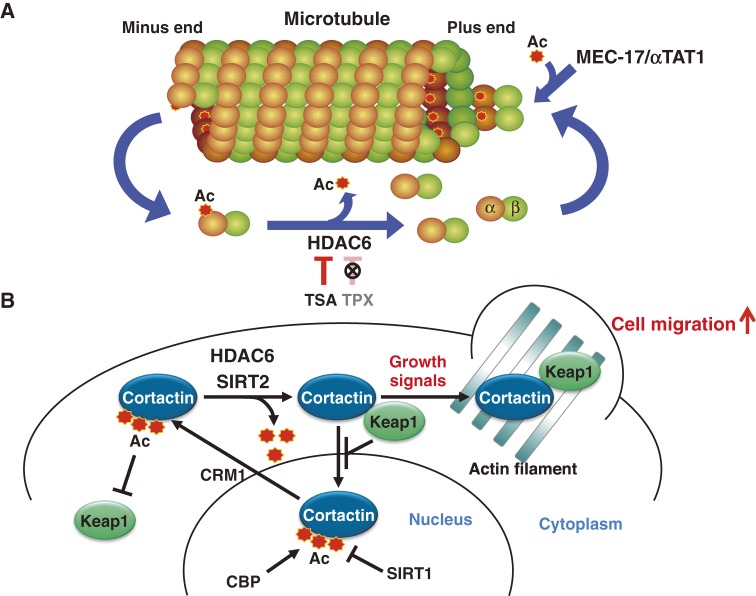Figure 7.
Regulation of cytoplasmic proteins by reversible acetylation. (A) Identification of HDAC6 as a tubulin deacetylase. By using the difference in target enzyme specificity between TSA and TPX, HDAC6 was identified as a tubulin deacetylase. TSA treatment increases α-tubulin acetylation, while TPX, which cannot inhibit HDAC6, fails to increase the α-tubulin acetylation. (B) Regulation of cell motility by cortactin acetylation and interaction with Keap1. Keap1, known as a negative regulator of the transcription factor Nrf2, was identified as a novel partner of cortactin, which regulates nuclear-cytoplasmic transport of cortactin. In addition, cortactin interaction with Keap1 is required for cortical localization of cortactin. Acetylation of cortactin inhibits the interaction with Keap1, thereby controlling cell migration. Cortactin is acetylated by acetyltransferase activity of the nuclear CBP, which is also by regulated by deacetylase activity of SIRT1 in the nucleus. Upon growth stimulation, cortactin is deacetylated by two cytoplasmic deacetylases, HDAC6 and SIRT2, which promotes cortical translocation and cell migration.

